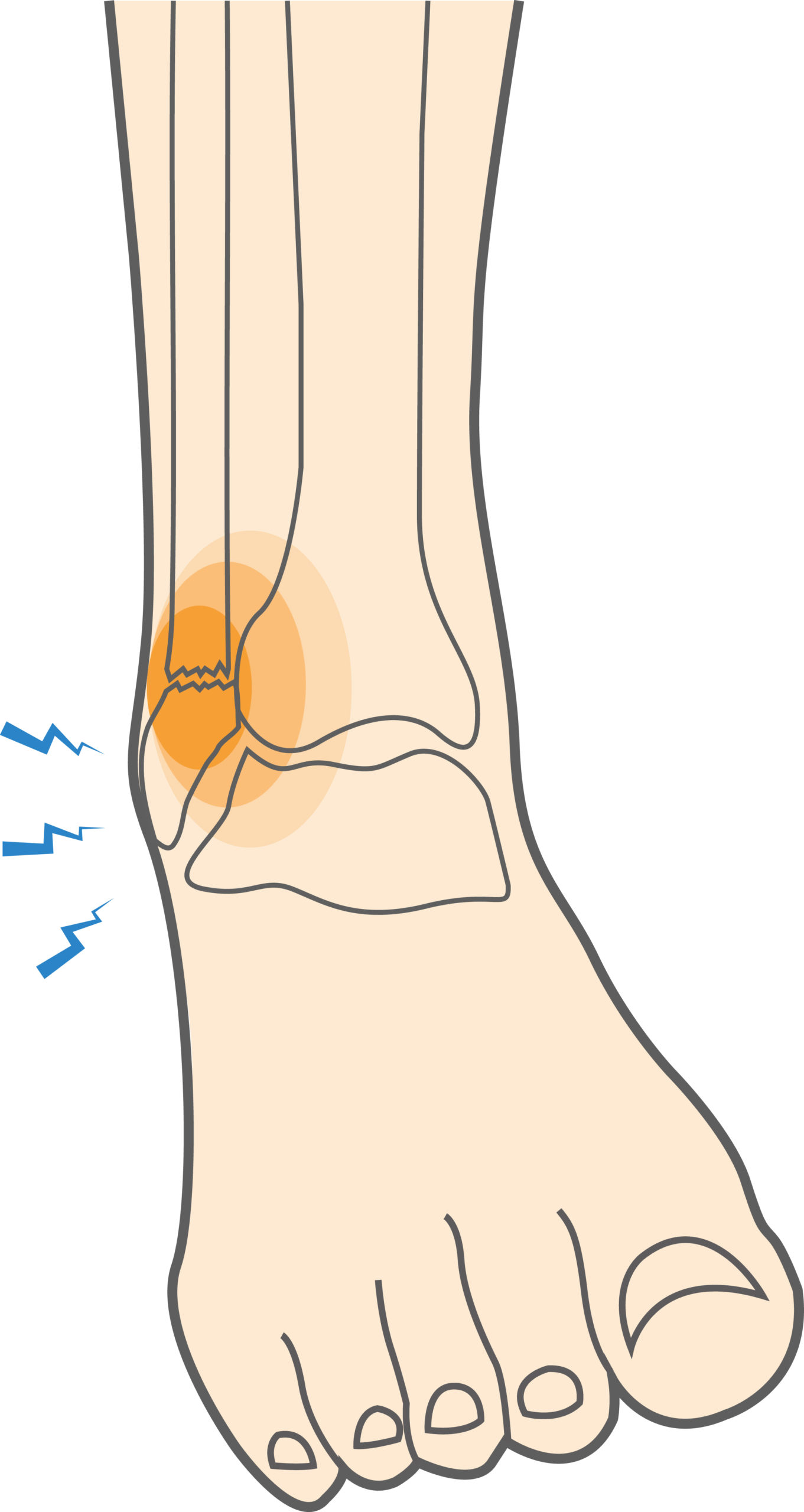The fibula bone is a long thin bone on the outside of the leg that extends from the knee to the ankle. Most of your weight is carried by the larger bone of your leg called the tibia (shin bone).
At the ankle joint, the fibula is often called the lateral malleolus and when the fibula is broken at the ankle it may be called a lateral malleolus fracture. The fibula can be broken or fractured anywhere along its course from the outside of the knee to the ankle.
Pain below the fibula is often associated with an ankle sprain while pain on the bone itself can be associated with a fracture. When you have a lateral malleolus fracture, it is likely very painful to bear weight and there is pain if you touch the bone itself on the outside of your ankle. Both ankle sprains and fibula fractures occur from a similar mechanism, frequently by your ankle rolling under you. You may hear a pop or crack. This is frequently associated with bruising and swelling of your ankle.


